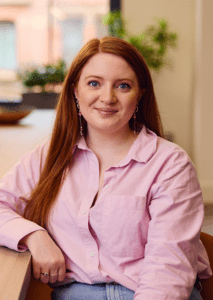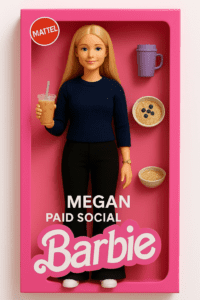Artificial Intelligence
Keep up to date with all the latest goings on in the artificial intelligence world here
Adobe move to acquire Semrush
Adobe is acquiring Semrush for roughly £1.6 Billion, a move that signals where SEO and digital marketing tools are headed as AI-driven search reshapes discovery and visibility.
The acquisition aims to combine Semrush’s search-intelligence capabilities with Adobe’s content and marketing stack which will help brands handle both traditional SEO and newer GEO channels.
As AI-powered search gains traction, the deal underscores a wider consolidation trend in the industry as marketers want unified platforms that track visibility across both classic search engines and AI-driven answer engines.
OpenAI launch “Buy it in ChatGPT”
OpenAI launched “Buy it in ChatGPT” with Instant Checkout on 29th September 2025.
OpenAI has introduced Instant Checkout in ChatGPT, powered by the Agentic Commerce Protocol, enabling US users to purchase directly from Etsy sellers in chat. Shopify merchants are next in line.
What’s new
- In-chat purchases for Etsy, with Shopify brands (Glossier, SKIMS, Spanx, Vuori, etc.) coming soon.
- Single-item checkout now; multi-item baskets and more regions planned.
- Protocol is open-sourced, hinting at adoption beyond ChatGPT.
Why it matters for marketers
- AI as a sales channel: ChatGPT shifts from awareness to direct conversion.
- Reduced friction = higher conversion potential: Purchases happen without site visits.
- Attribution challenges: Traditional analytics may not capture AI-driven sales journeys.
Next steps for digital marketers
- Audit your product feeds: Ensure your listings (Etsy, Shopify) are optimised for AI discovery.
- Experiment early: Test Instant Checkout readiness to benchmark performance vs traditional funnels.
- Revisit attribution models: Plan for gaps as AI platforms handle more of the buyer journey.
- Monitor protocol adoption: Stay ahead as the Agentic Commerce Protocol spreads to other platforms.
OpenAI adds Shopify as a shopping search partner
OpenAI has integrated Shopify as a third-party search partner to enhance its shopping search capabilities, allowing for more comprehensive set of shopping results.
This partnership, which was not formally announced, was quietly added to OpenAI’s ChatGPT search documentation on May 15, 2025. Shopify joins Bing as a third-party search provider, a few weeks after OpenAI’s enhanced shopping experience was introduced on April 28.
Aleyda Solis LinkedIn postYouTube rolls out generative AI tools to more creators
YouTube has announced it will expand access to Google’s Veo 3 generative AI tools for Shorts later in the summer.
The tools were first introduced to select creators in February and allow users to generate short videos from text prompts. YouTube CEO Neal Mohan shared the update at the Cannes Lions Festival, highlighting how these tools can empower more users creatively.
Find out moreOpenAI upgrades ChatGPT search with shopping features
Users can now search – and buy – products through Chat GPT, Open AI has announced.
ChatGPT will now offer product recommendations, images, reviews and include direct links for users to buy the products.
This doesn’t include paid-for results but instead organic search results with plans down the line for AI to feed relevant results to users based on prior searches.
What does the update mean for PR strategies?
The update emphasises the importance of product PR as part of your approach.
If you’re not already, incorporating product placements, samples and reviews into your always-on activity will be key in gaining visibility in AI search.
While backlinks were once used to judge website performance, LLMs are prioritising context and relevance of brand mentions, making product PR the perfect tactic.
To support this, expert commentary remains an important trust signal so balancing this with product PR will be key in building an authentic, trustworthy brand in the eyes of LLMs.
Find out moreYouTube are Testing AI Overviews in Search Results
Today, it’s been reported that YouTube are starting to test AI overviews within their search results, in order to highlight what they deem “the most relevant clips” for individual users; based upon their search.
We predict that this will not only impact user interactivity with watching longer videos in full, but may also cause a shift in search behaviour from within the YouTube platform. In theory, by delivering this type of snapshot video content, users will be delivered touristic and local content much quicker, as well as when carrying out product research related searches too.
YouTube will expand the rollout of their AI overviews test based upon the results of a small subset of YouTube Premium members’ feedback, in the US initially.
Find out more on Search Engine JournalGoogle claims “EEAT Can’t be Added to Web Pages”
At a recent conference in New York, Google’s John Mueller claimed that “EEAT is not something SEOs can add to their pages.” He went on to discuss the role of EEAT and stated that adding keywords or metadata to content is, in fact, not what EEAT is about. Mueller emphasised that EEAT is more significant for YMYL (Your Money or Your Life) content, such as finance or healthcare, where accuracy and trustworthiness are paramount.
Non-YMYL content, like blogs, on the other hand, should step away from EEAT signals as they are not a significant factor in Google’s ranking assessments.
So what does this mean for SEO?
Many SEOs base their strategies on hitting as many EEAT signals as possible, but Mueller’s message is that this overlooks the bigger picture. SEOs should instead focus on demonstrating real trust and expertise, not just fabricating it with imaginary industry experts and AI-generated images.
Instead, we should go back to basics: content should be high-quality, informative, and genuinely useful to the user. This is what Google truly values—not web pages that simply tick off a list of points the algorithm supposedly favours. You might think this is basic knowledge, but the recent rise of AI has led many SEOs to abandon strategies that produce content unique, targeted, and personal to the user.

Expert opinion
Cara Dudgeon, Senior Content Writer
ChatGPT launches an image generation update
OpenAI’s recent update to ChatGPT, powered by the GPT-4o model, introduces advanced image generation capabilities in the chat interface. This new update allows users to generate AI images in various art styles, including photorealism and stylistic visuals. ChatGPT-4o now understands visuals on a deeper level. It can analyse user-uploaded images, extract content and visual cues, and use the information to create new images. A standout advancement is GPT-4o’s capability to understand highly detailed prompts. While many other AI image generators struggle to handle more than 5 to 8 elements, GPT‑4o can handle up to 10 to 20 different objects.
This opens up countless opportunities for marketers, allowing them to mock up complex visuals such as vibrant product flat-lays with more control than ever before. It also opens up new possibilities for asset creation, especially for those with smaller budgets who are working on evolving visual identities. They can generate, tweak, and refine visuals seamlessly and extremely quickly. The latest model ensures consistency across iterations, which helps build brand recognition and storytelling power.
We’ve seen many users on LinkedIn having fun with this, using the new update to create versions of themselves as dolls. It’ll be interesting to see where this update leads us!

Here is what our senior paid social executive, Emma Sowersby, had to say about this update:

Expert opinion
Emma Sowersby, Senior Paid Social Executive
Google Ads Rolls Out a Useful AI Update for Brand Keyword Matching
Keyword Match Types and the logic that goes into matching them to Search Terms has been evolving and changing for years. The saying goes “Exact Match is no longer Exact”, with Google continuously trending toward less precise targeting, instead leaning on machine learning to widen the scope of keyword targeting to include longtail and new search terms that can’t be predicted.
The latest announcement from Google includes 4 key changes that will have PPC advertisers changing the way they work with their brand and the unique search terms in that sphere.
- Mispelled search terms are becoming easier to manage! If you’ve ever struggled to add negatives of all the potential mispells of a brand term, this AI-driven update means advertisers need only add the core brand term. AI will ensure that mispells are included.
- Brand Exclusions across ALL keywords and DSA campaigns are rolling out, expanding the Performance Max feature to core campaign types.
- Additional suggestions for Brand keywords and search terms, which turns a Broad Match keyword into a wider brand “sphere” targeting-signal, allowing for “Brand Generic” keywords to filter through more often.
- Previously un-trackable “Other” search terms will now start showing, giving advertisers more direct control over targeting and exclusions – this last one allows PPCers to “rein in” the expanded targeting that the expansion caters to.
All of this trends towards more consolidation in Google Ads campaign structure, encouraging less fragmentation between Brand and Non-Brand campaigns, joining them up to act as a “Messy Middle Search Campaign”.
Automatically Created Assets Are Coming To Performance Max
Google has started testing its automatically created assets feature on Performance Max campaigns
Performance Max is continuing to be Google’s favourite test-bed, with Google now testing “automatically created assets”. By using advanced AI generative process, this feature takes advertiser’s already-uploaded text & image assets to create something new.
If you’re familiar with Google’s Responsive Display Ads, or Discovery Ads, you’ll understand how this works: Google will “mix and match” text and visual assets together, in order to create visual ads (similar to Display ads) to increase visibility of your ads across networks outside of Search & Shopping. As usual with Performance Max, advertisers can choose to let “the machine” handle decision making here, although how closely these “auto-assets” will adhere to brand guidelines remains to be seen…
Search Generative Experience
Google’s Search Generative Experience (SGE) is finally here!
Well, kind of. On May 25th 2023 Google announced SGE, which added “AI” results to the top of some searches, which is powered by Google Gemini (formerly Bard).
The initial rollout was to users who had opted in and were signed into their Google accounts.
Find out moreGoogle I/O Post-Game Update: The Latest Advancements In AI For Google Ads
This year’s Google I/O showcased how the latest advancements in AI can help “boost creativity”, and generally raise the bar for productivity. Google also reaffirmed their objective in building and deploying AI responsibly (we’ll let you decide what to make of that last bit).
Some new products and variants within the Google AI landscape were promoted, such as the new search generative experience (SGE) that will make search engines more of a conversational piece while connecting users to the information, services and products they desire, via “Bard” – this will expand and enhance new and existing apps such as Google Workplace, Maps, Lens and more .